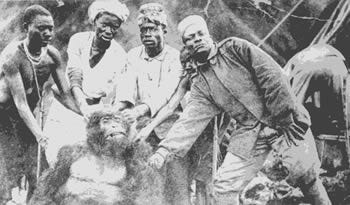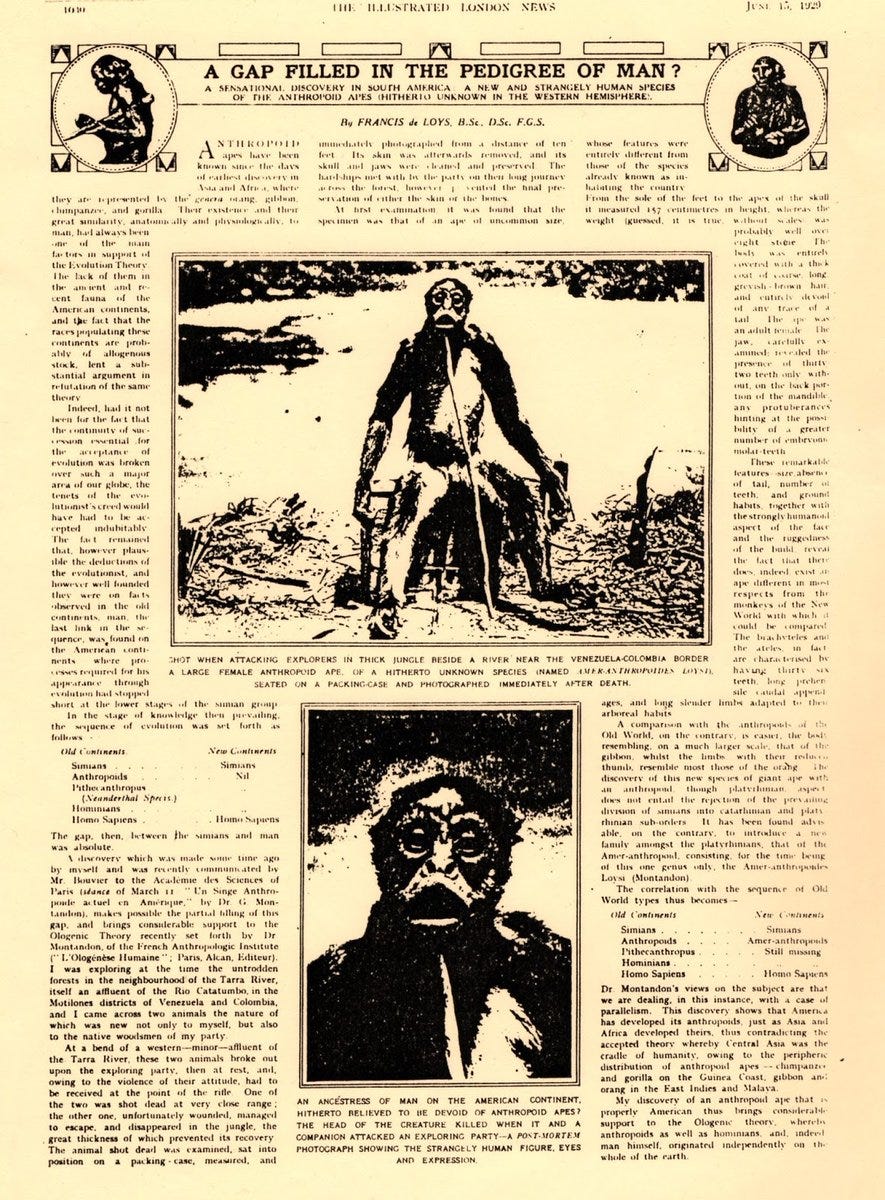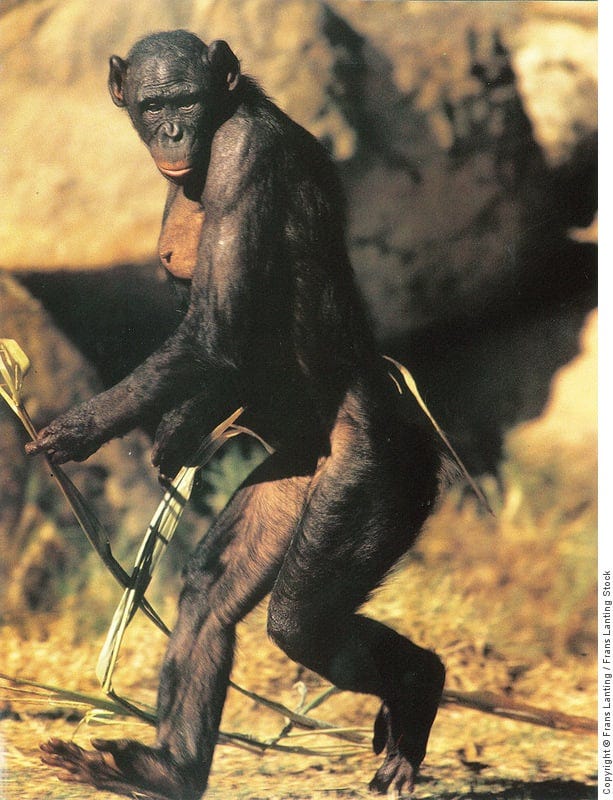Is the Existence of Bigfoot Rightfully Doubted?
Why is a practice that led to the discovery of the Gorilla by Europeans shunned in the modern age?
Why do people shun the innate nature of the European blooded people to explore and discover?
Gorillas were largely considered “cryptids” (what Bigfoot happens to be known as now) by the Western World until 1847. Thomas S. Savage discovered the first bones belonging to an unknown species of ape in Africa that had never been observed by Europeans, later being known in the scientific context as “Troglodytes gorilla”, after being presented at the Boston Society of Natural History. However, even multiple skulls and other bones weren’t enough to lead to a total widespread acceptance in the scientific community. Understanding the history behind the investigation, discovery, scientific confirmation of the Western Gorilla, and therefore other types of Gorillas, is vital to making an argument that there is more to the Bigfoot mystery than urban legend, and justifies researching and exploring proposed Bigfoot habitats for evidence of its existence.
This is notable because we find ourselves in a similar situation to the ongoing investigation of Bigfoot. Despite finding intact skulls of Gorillas in Africa, Savage’s findings were not enough to convince mainstream scientists and anthropologists of the time that Gorillas were real animals and not just African tribal tales. Scientists did not fully concede that Gorillas were more than myth until 1859, when the biggest victory in proving the Gorillas existence was achieved by Paul Du Chaillu, a French-American explorer who on an expedition to West Africa recorded sighting multiple Gorillas. He conferred with locals and took note of their tribe’s folklore and stories of giant furry manlike beasts of the jungle that had been passed down for years, even being traced back to Hanno, the Navigator of Carthage. Du Chaillu took dead specimens of his findings and was credited as the first known European to find and retrieve corpses of Gorillas. The Gorilla's recovered by Du Chaillu were likely Western Gorillas, and vindicated Savage’s original findings.
Friedrich Robert von Bering, an Imperial German Officer, during an expedition in 1902 to Rwanda, shot 2 apes of unknown species. Friedrich sent the corpses to the Natural History Museum in Berlin where they were designated as Eastern Gorillas, or “Gorilla beringei”. This discovery confirmed the existence of not just Gorillas, but distinct species and variations amongst Gorilla populations. Friedrich’s efforts proved that there were distinct and unique species of Gorillas, and later proved the existence of sub-species within the Gorilla umbrella.

So, why is understanding the history of the Gorilla relevant to Bigfoot? It is important to study and understand the history and discovery of the Gorilla so we can compare and apply the same process to the act of seeking out and attempting to discover Bigfoot. So if despite the many native accounts spanning decades, possibly centuries, of hairy creatures larger than man in the jungle, recovered bones, and eyewitness accounts, even by European explorers, weren’t enough to prove the existence of the Gorilla to Europe, then we have a benchmark to strive for when searching for Bigfoot. We can even put the modern state of Bigfoot research on a timeline comparable to a timeline of Gorilla discovery. We have countless native and tribal accounts of bipedal, hairy, tall, and in some cases aggressive creatures that live deep in the woods. This is clearly similar to how Europeans first became notified of the possible existence of Gorillas. We also have countless eyewitness accounts (we will disregard photo and video evidence temporarily for the sake of the comparison) of textbook Bigfoot activity. Now, I will concede that many eyewitness accounts are likely fake, however there is even a history of European explorers fabricating walking, bipedal, and large primates such as the De Loys Ape. The De Loys Ape was in all actuality an above average in size Spider Monkey, which are native to South America. Despite this, Francois De Loys passed this off as a possible missing link in evolution, but he was subsequently exposed as a misleading character. This fraud, while not related to the Gorilla, shows that even in 1920, we had wrongdoers in the primate exploration field.
So, if even in the early 1900s there were falsifiers in relation to primates, did that stop honest researchers of the time from researching primates? The answer is an obvious no. So why should they stop modern day Bigfoot researchers? I would like to also point out the story of the Bili/Bondo Ape. This specific topic could be an article by itself, and very well may be, but for now, I would like to point out that for YEARS, the Bondo ape was considered a cryptid. Due to constant instability in the region, research and expeditions to the Congo region were near impossible, but evidence of the Bondo ape had been passed around as early as 1908. However, it wasn’t accepted by biologists that these apes existed until 1996, with them not being named as we know them now until 2003. These apes are giant, have Gorilla like features, kill lions, and brush off poison arrows shot at them by natives in the region. So, comparing the Bondo apes to Bigfoot, the Bondo ape started as just a rumor by natives, sightings, and the occasional dead animal, and who does that remind you of? It rings a bell to me.
To conclude, it is my belief that we are on the right track in regards to Bigfoot, and we must have a nuanced outlook when analyzing Bigfoot evidence. As there were bad actors in the European hunt for Gorilla and the Mondo Grande (what the “De Loys” ape was rumored to be) there are bad actors in the Bigfoot movement. If we are able to weed out the low IQ and ill behaving of the Bigfoot effort, we can take monumental steps in Bigfoot discovery. If we follow the lengthy process that discovering the Gorilla took, then we are on the right track. Ruling out Bigfoot’s existence completely is foolish and the result of the subverted scientific community, which operates more as a religion than a serious field in the modern day, and is not to be taken seriously.








ts deep af nigga